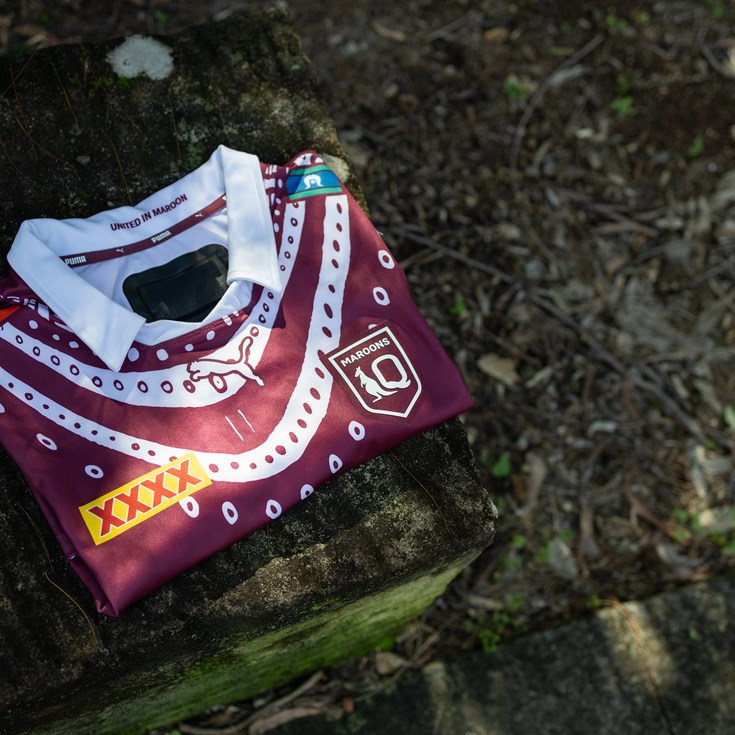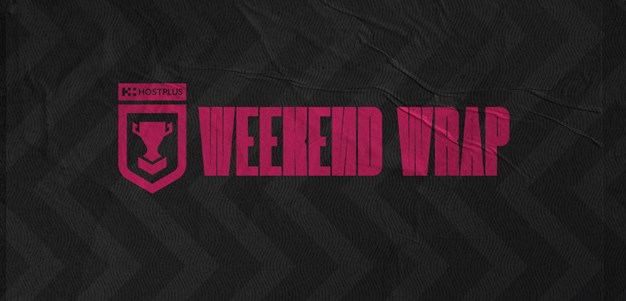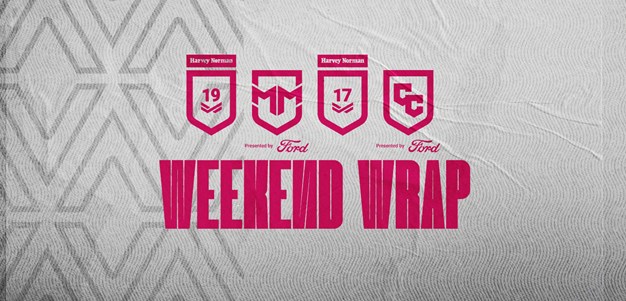Recognition of past players validates the sacrifices made by those who committed to the development of women’s rugby league long before it was in the spotlight.
The Queensland Representative Player numbers tell the story of the women’s game in the same way the FOGS numbers have done for the men.
They reward the efforts of not just those of us privileged to wear the Queensland jersey, but also those people who supported us in achieving that.
Knowing the history of the game will inspire future generations to carry on the legacy of women’s rugby league in Queensland.
For me, playing for Queensland was an absolute privilege and honour.
It looks like you may be using adblocking software to view this site.
Many features on the site, such as video playback, may not work properly when using adblocking software.
Please whitelist our domain or disable your adblocker to access all features and videos.
Women recognised with Queensland Representative Player numbers
Finding out I was first going to play for Queensland was an absolute thrill. I'd only just played about three of four games of rugby league for the Toowoomba Fillies, so I wasn't really expecting it. It was a goal I had set, but I thought I would have a little bit more time in the game.
I was quite overwhelmed. I was living in Warwick. Because I didn't live close, I actually didn't get to any training sessions, so I literally was playing for Queensland, but hadn't been to any training sessions even for club because I had to travel so far. I only ever turned up and came off the bench.
I felt like a bit of fraud actually. I thought 'I don't know if I can do this', but straight away I knew Karyn Murphy and Annie Banks (who wasn't playing but was an administrator) and they got around me really quickly.
A legendary prop Deborah "Ninga" Merritt took me aside and said 'this is how we do it and you'll be fine', so I remember those people really clearly looking out for me.
I was a forward and playing second row in my debut on Murph's side.
I remember the game really clearly. The first hit up I took, I ran straight into Katrina Fanning (Jillaroos prop) and she belted me so hard. I survived the game and I even scored a try. I actually didn't end up scoring again until the end of my career.
Right at the end of the game, I actually snapped my ACL, so at the end of the game, I was told I had a good chance of being selected for the Jillaroos, but too bad, so sad and had to have three years out of the game due to rehab and teaching.
There was this one game at Suncorp Stadium, and there was hardly anyone there, but it was great to have such good girls around us at such an iconic stadium. I had my parents there - they never thought their little girl would be play footy and with Steph Hancock, who I grew up with.
It really lit the fire for me, even though I got badly injured, I wanted more of that as a Queenslander and I wanted to make the Jillaroos, but I actually had to give my jersey back because the girl who replaced me in the second game at Newcastle had to wear it. This was in 2004.
My training kit in 2004 was a pair of socks, a pair of shorts that were four sizes too big and a dirty old polo shirt and training shirt - this was my entire training kit for my first Queensland experience, plus a $600 bill I had to pay to play.
We didn't stay anywhere or have any food or travel together as a team.
I had seven series for Queensland. First in 2004 and then next was 2008, because of time off due to injury and finishing my teaching career.
Karyn Murphy rang me and said: 'Big fella, where have been? You've sort of just disappeared. Come back and play in the Brisbane comp.'
So I drove from Roma to Brisbane each week to play for West Mitchelton.
I played at nationals in 2007, but no one in the team got picked, including Karyn Murphy. But I got picked for Jillaroos that year and from there, stayed in the Queensland team.
Everyone was my favourite team mate. It was a really good vibe always and even back then, there was little improvements. The profile got bigger and the girls got a World Cup in 2008 and former players like Karen Stewart came in and tried to make things more professional; we had booklets and a full team tracksuit and we stayed for a couple of nights together.
By the time I had finished, Brad Donald was the Queensland coach and we stayed at Royal Pines and we didn't get a bill, we got more gear and we kept our jerseys.
There were so many characters in the team - some girls came and went, but there were a core group of girls who played through the years, like Erin Elliott, Suzanne Johnson, Tahnee Norris, Karyn Murphy, Renae Kunst, Tara Westera, Millie Edwards, Tracey Bailey, Theresa Anderson.
We had this group for the most part of my experience as a Queenslander and we didn't have many changes each year.
No matter whether we had experienced coaches or not, or a budget or not, or we were injured or not, or if we had to travel or not - we shared the adversity and I think a lot of our cultural background as a rep team has been built on the passion Queensland has for its men's State of Origin team and we bought into it as consumers of the game growing up.
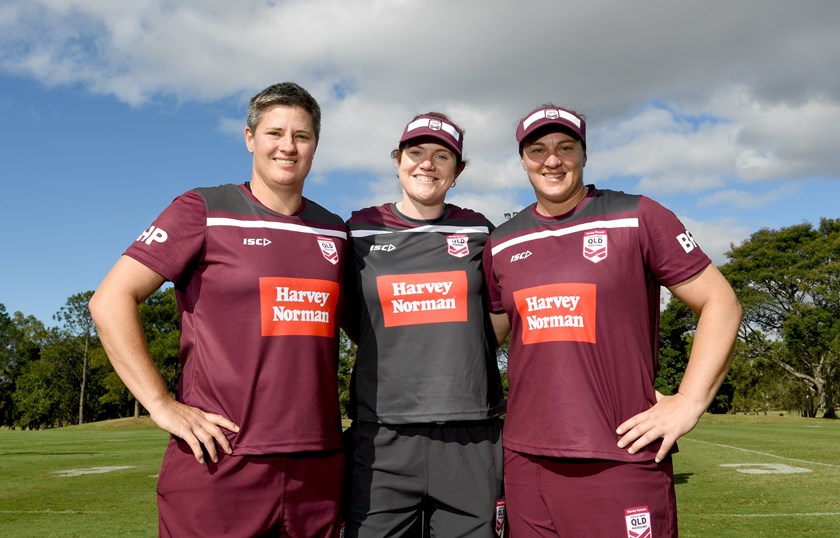
We took that all in and poured it into our experiences on the field.
People say to me 'oh, why would you want to play the game?' I say back 'why wouldn't you want to play the game?'
We were raised on it with the men and I'm the same age as the State of Origin - we were both born in 1980. It's all I've known, so of course why wouldn't I buy into it as a player. Now, I don't think that's a question that girls get asked, which is a sign of the times, which is great.
The Queensland women's team first started in 1999; because there wasn't as much media, you couldn't just Google the history of the women's team.
I know for me, I made a point of wanting to know everybody's names, but I thought I was pretty quiet, like I sat back and I knew who had played for Australia because I had researched it.
Deborah Merritt - Ninga was formidable. I played club footy against her and she used to intimidate me and so did 'Mad Dog' Leah Williams, but playing for Queensland, these two girls really took me under their wing as an upcoming prop and that can be a scary place to be when you're starting out in footy.
They led by example. They didn't have the media and they didn't talk themselves up or have social media, but I knew who they were. I knew who Katrina Fanning was before she belted me in that tackle and I probably got that from being around Murph and Tahnee (Norris) and Annie Banks who talked about those players.
I was just so humbled to wear that jersey and knowing who went before me was so important to me. We knew that girls like Tracey Thompson just hadn't lost, so you don't want to let people down on that.
Now, I'm honoured to be part of the Queensland coaching staff.
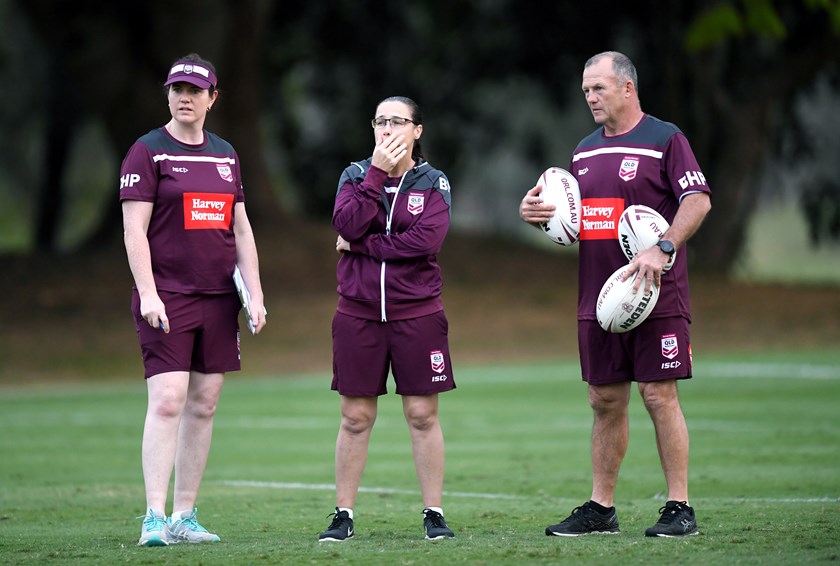
It is so incredibly exciting and incredibly different to watch girls not get asked questions like 'are you sure it's tackle?' and 'isn't it just touch?' - there isn't the ignorance that there used to be or the negative stereotypes or the homophobic slurs that there used to be around the game.
That's just so wonderful to see around the game and there is prestige in being involved as an administrator and staff member which there never used to be.
It makes me really appreciate what happened when I was a player more. I thought I always did appreciate it, but you don't really know the feeling until you're in the shoes of a manager how you never switch off. But I have an uncle who is involved at grassroots level and was on the board and was an AO medal recipient and has always inspired me as a kid.
When I first got this job, he rang me because he read it in the media and he was like really happy for me, but also kind of got straight into business and gave me tips and gave me an ultimate quote to reflect on.
His advice? You need to do your job so they can do theirs.


